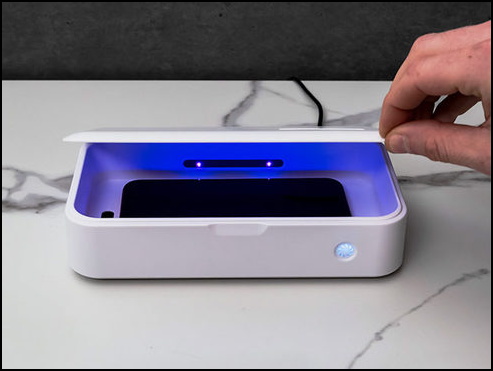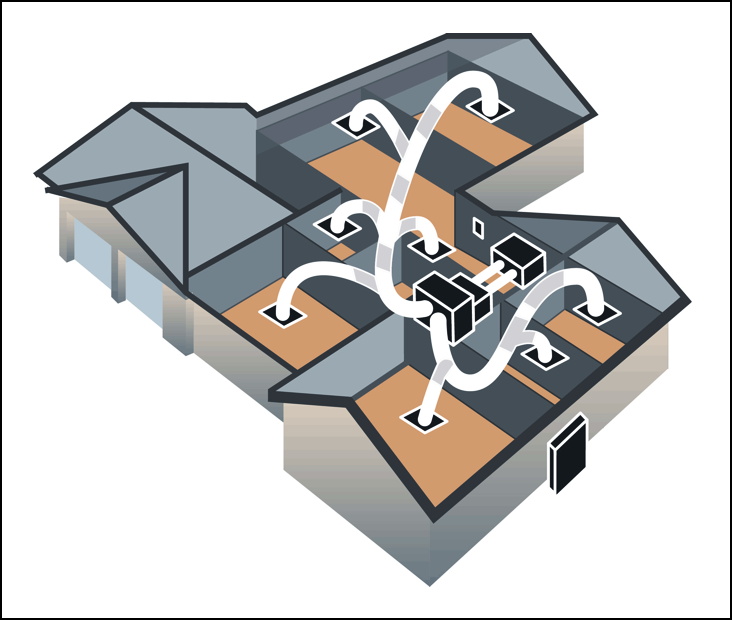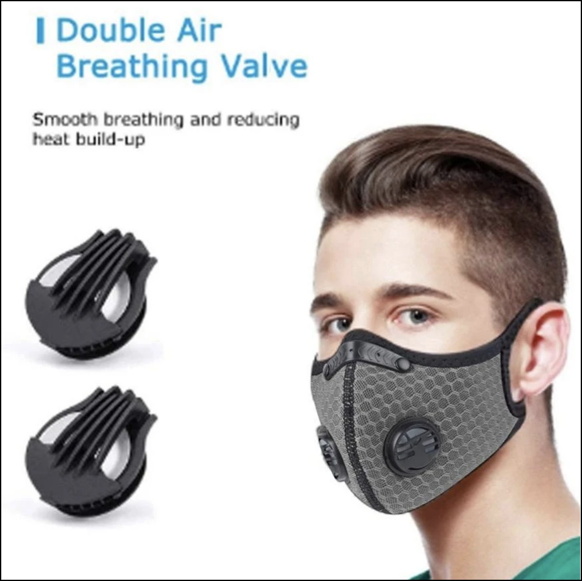David Noel
<davidn@aoi.com.au>
Ben Franklin Centre for Theoretical Research
PO Box 27, Subiaco, WA 6008, Australia.
SC006: UV Gates for Controlling Coronavirus Spread
Understanding the spread of airborne viruses
The year 2020 has seen the world-wide spread of COVID-19, a serious coronavirus disease of humans, leading to many millions of infections and hundreds of thousands of deaths.
Coronavirus appears to be very largely airborne in its spread. It spreads especially quickly in situations where air is being recirculated among humans in closed spaces, such as in meeting halls, cruise ships, large offices, retirement homes, airplanes, and hospitals. Most of these places are air-conditioned or have forced ventilation.
Because these viruses are airborne, measures such as sanitizing surfaces and reducing skin contact appear of limited value in controlling their spread. Physical separation of virus sources from potential sufferers (quarantine) is effective, but inconvenient and often costly. A better approach is to treat the air flowing between people.
Use of Ultraviolet light (UV) to sterilize air
Ultraviolet light of certain frequencies is very effective in killing airborne germs. Hospitals have embraced ultraviolet (UV) lights as a cleaning tool for years, using large, industrial-grade machines to decontaminate rooms [1]. However, UV can also be harmful to humans -- ultraviolet rays can cause burns to the eyes and skin [2].

SC006-F1. Sterilizing a hospital room with UV. From [1].
Smaller UV sanitizers for home use are available quite cheaply (around $50), such as that shown in Figure F2. These typically use LED lights (LED lights are a recent technology in energy efficient lighting. LED stands for Light Emitting Diode, a semiconductor device that converts electricity into light).

SC006-F2. A UV Light Sterilization Case. From [2].
The device in Figure F2 uses four UV-C LED lights, which emit at a frequency of 260-280 nm (nanometres, millionths of a metre). UV Sanitizers are also available in the form of wands, which can be waved over articles to be sterilized.
A 2014 study tested the efficacy of these portable wands and found that they killed 100% of commonly-found bacteria within five seconds and inactivated 90% of spore-forming bacteria, which are harder to kill, within 40 seconds.
About UV light and its frequencies
There is a good explanation of this in [1]. An extract says "UV light is highly effective at killing germs.The three main types of UV rays are UVA, UVB, and UVC. Because UVC rays have the shortest wavelength, and therefore highest energy, they are capable of killing bacteria and viruses, also called pathogens. UVC light has a wavelength of between 200 and 400 nanometers (nm).
It is highly effective at decontamination because it destroys the molecular bonds that hold together the DNA of viruses and bacteria, including 'superbugs', which have developed a stronger resistance to antibiotics.
Powerful UVC light has been regularly used to decontaminate surgical tools and hospital rooms. A study that included 21,000 patients who stayed overnight in a room where someone had been previously treated found that sanitizing a hospital room with UV light in addition to traditional methods of cleaning cut transmission of drug-resistant bacteria by 30%.
This is partly because UVC light can effectively sanitize hard-to-clean nooks and crannies. UVC light works by destroying the DNA of pathogens, which makes it effective against "superbugs". But this broad-spectrum light is also a health hazard -- linked to diseases such as skin cancer and cataracts -- and humans cannot be in the room when it is used" [1].
Air circulation and ventilation systems
Enclosed areas which hold numbers of people normally use ventilation or air-conditioning systems to keep the people supplied with "fresh" air. These systems usually contain filters, which remove particles from the air, but these work only for larger particles.
For example, cruise ships use AC units that generally cannot filter out particles that are less than 5,000 nanometers in size. For comparison, respiratory viruses that are similar to Coronavirus, such as SARS, are around 120 nanometers in size. So, if COVID-19 is around the same size, this means that it can spread through the cabins of a cruise ship without being filtered out [3].
Evidence of COVID-19 has been found in air conditioning vents in some hospitals, raising the question regarding filtration systems for many buildings.
Fitting UV Gates to ventilation systems
Figure F3 depicts the layout of a typical ducted air-conditioning system in a home. Such a system draws in air from the outside through a filter and chills it in a refrigerated or evaporative unit, before distributing the chilled air to various points of the house through a set of ducts.

SC006-F3. A household ducted air-conditioning system. From [4].
Ventilation systems in cruise ships, offices, hospitals, and meeting halls are similar in principle. It would be simple to fit UV Gates (units emitting UV light) into the ducts of these systems. These could be based on UV LED lights, which are small and use very little electrical power.
Retrofitting homes with UV Gates should be within the capability of a handyman, larger installations would use trained contractors. For new installations, manufacturers might be expected to supply equipment already fitted with UV Gates.
Widespread adoption of UV Gates throughout public areas can be expected to greatly reduce the impact of airborne viruses and other disease vectors.
Face Masks and PPE
During the 2020 COVID-19 pandemic, the use of facemasks has often been recommended or required by government authorities. Masks have been shown to reduce the spread of droplets and aerosols in talking and breathing, and in some circumstances have become the accepted thing.
However, typical fabric facemasks do not have any virus-killing function, they only condense and limit the flow of the airborne water droplets which can contain virus particles. In some sense, it is even possible that they could concentrate the effect of a virus, if this builds up a reservoir in the mask fabric which is being sucked in and out during breathing.
It would not be hard to design facemasks which incorporated small UV Gates. UV LEDs draw little power, and this could be supplied from small batteries fitted in the masks.

SC006-F4. Facemask with valves. From [5].
Figure F4 shows a widely-available type of facemask which incorporates two valves, through which incoming and exhaled breath passes. These valves could be upgraded to include UV Gates.
There may be concern, in the design, that surplus UV light not escape from the valves, to the possible detriment of the user. However, recent research involving UV light within a narrow spectrum should allay such concerns.
In this, researchers have been working with narrow-spectrum UVC rays (207-222 nm). This type of UVC light kills bacteria and viruses without penetrating the outermost cell layer of human skin.
A 2017 study [1] showed that 222 nm UVC light killed methicillin-resistant Staphylococcus aureus (MRSA) bacteria just as effectively as a 254 nm UVC light, which would be toxic to humans. This study was repeated in 2018 on the H1N1 virus, and narrow-spectrum UVC light was again found to be effective at eliminating the virus
This has particularly important implications for public health since the possibility of non-toxic overhead UV lighting in public spaces could drastically reduce the transmission of diseases [1]. Killing bacteria and viruses with UV light is particularly effective because it kills germs regardless of drug resistance and without toxic chemicals. It is also effective against all germs, even newly-emerging pathogen strains.
More elaborate PPE (Personal Protective Equipment) can be used, where available, for situations where the possibility of virus spread is high. However, there seems to be limitations in this, in that cases of spread of infection to non-inmates in quarantine hotels, nursing homes, and even hospitals, has occurred.
Summary
The use of UV Gates (devices emitting UV light of selected frequencies) in air-circulation systems and breathing masks should greatly reduce the impact of airborne disease vectors of every sort. This might be of great value in the current fight against COVID-19.
The production of inoculation treatments against COVID-19, currently eagerly awaited by populations throughout the world, will obviously be of great importance in the future. But this will involve considerable organization and cost, and may be specific for just one virus disease. Widespread introduction of UV Gate techniques throughout areas where people meet and travel could have a widespread positive effect for our civilization.
References and Links
[1] Does UV light kill germs? MUVGI-8 (UV-C) against COVID-19. http://thalheimer-kuhlung.com/en/does-uv-light-kill-germs-muvgi-8-uv-c-against-covid-19/m .
[2] CleanTray UV Light Sterilization Case. https://deals.newatlas.com/sales/cleantray-uv-light-sterilizer-white .
[3] Air conditioning and the Coronavirus - Everything You Need To Know. https://www.fallonsolutions.com.au/Handy_Hints/air-conditioning-and-the-coronavirus-everything-you-need-to-know .
[4] 7 Simple Tips To Ensure Your Ducted System Survives Summer. https://austclimate.com.au/7-simple-tips-ensure-ducted-system-survives-summer/ .
[5] Double Air Breathing Valve. https://poricoo.com/collections/shop/products/kz095 .
* * * * * * * * * * * * * * * * * *

Go to the Social Engineering Home Page

Assembly begun 2020 Aug 2.
Version 1.0. On web 2020 Aug 4.







